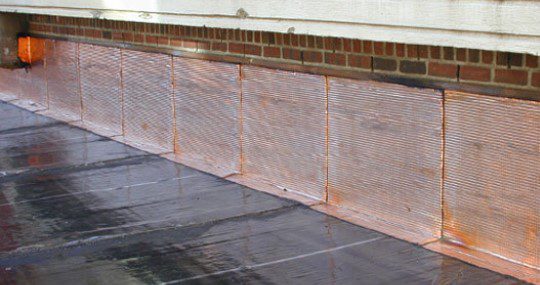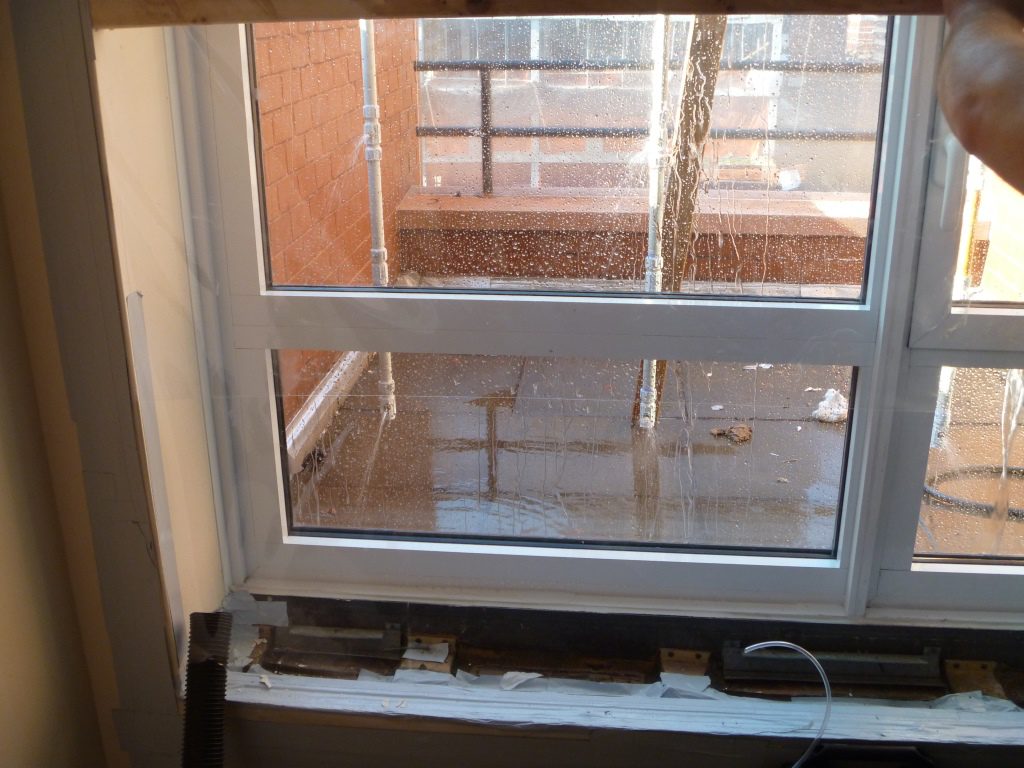Crime Scene Investigation: The ‘Leak’
March 10, 2023
Finding the source of a leak is comparable to solving a crime. Placing a suspect at the scene is a basis of Forensic Architecture. The analysis of evidence creates a link between the perpetrator (water infiltration) and the crime (the leak). The mere fact that the suspect (presence of moisture) was present may be an indication of guilt.
Water penetration into a building’s facade can lead to corrosion of embedded ferrous metals, degradation of façade materials, and leakage into occupied portions of the building. Corrective measures to prevent water penetration are usually not implemented until leakage or an unsafe condition is reported. Many municipal façade ordinances recognize that water infiltration through a building’s facade should be immediately addressed.
Solving the leak involves the following steps:
- Investigating the Scene of the Crime: Review the evidence at the scene, be aware of what you’re looking at and what you are looking for.
- The Tools of the Trade: Learn techniques and tips that will go a long way toward preventing crimes before they happen.
- Give the Third Degree where lines of questioning and methods of isolating suspicions get your ‘leak” to confess where the problems are originating.
- In the end, you will be ready to see the lineup of The Usual Suspects, common problems that are generally responsible for causing a leak leading to unsafe conditions.

Inspections
There are thousands of buildings in New York State that require periodic inspection at intervals ranging from one to five years. As more municipalities enact façade ordinances, this number is sure to grow. To keep pace, qualified inspectors are needed who can quickly and effectively perform these inspections. Proper diagnosis of water entry and the implementation of maintenance and repairs can reduce the potential for hazardous conditions developing at a later date.
The inspector’s goal is to assess the water tightness of the building façade and evaluate possible ways in which water can penetrate the building. While performing the façade inspection, the inspector should try to “interview” the building about reported water leakage and earlier repairs implemented to address water infiltration:
- Were there any water leaks in the past? Get a historical background
- How long has water been leaking into the building? Remember that leaks usually develop for some time before they are observed or reported.
- Does water leakage seem to follow a pattern? Look closely at interior and exterior stains. In particular, note the location of water leakage signs relative to features such as window heads and sills, setback walls and roof drains.
- Under what circumstances is water leaking into the building? Does leakage occur quickly after rain starts, or does it take a while for leakage to develop? If water leakage lags behind rainfall, water may be accumulating under a roof membrane, inside a wall system, or travelling a substantial distance from the infiltration point to the observed leak.
- Does the building leak every time it rains, only during rainstorms with high winds, or during any other specific weather conditions?

Innocent or Guilty?
The linkage of evidence is the heart and soul of forensics and puts the suspect at the scene. It is up to the ‘police’ and ‘prosecutors’ to prove that the linkage is proof of guilt. The functions of the criminals (water infiltration), the crime lab (the building) and the crime scene investigator (your qualified inspector, like HLZAE) are key participants in this drama.
HLZAE follows a methodical approach to waterproofing that considers a building in its entirety and the most vulnerable locations. Our expertise includes testing both to identify the causes of existing leaks and to confirm the performance of new installations. The various details and materials we use address obvious water conditions such as falling and windborne rain, in addition to complexities such as New York City’s freeze-thaw cycles and potential damage caused by water trapped within façades. HLZAE provides waterproofing services for new construction or rehabilitation of commercial, institutional, and residential properties.
Recommended Articles
Sorry, we couldn't find any posts. Please try a different search.
